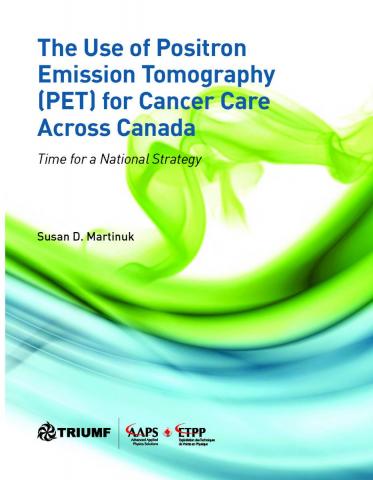
Report finds substantial variation in---and opportunity for---uptake of new technology for clinical care of cancer
Cancer is a growing challenge to Canadians and an increasing burden on healthcare budgets. A ground-breaking report released today suggests that access to, and utilization of, leading-edge medical-imaging technology for the diagnosis, staging, and monitoring of cancer treatment varies widely from province to province, putting cancer patients in some areas at a distinct disadvantage.
The technology, called Positron Emission Tomography, is often coupled with Computerized Tomography (CT) and is known as PET/CT imaging. PET imaging is already widely used and integral to cancer care in most developed nations, and increased utilization of this technology could provide more clinically-effective and cost-effective treatment for cancer patients in Canada. A nationally coordinated strategy to take up this technology and standardize its use could bring Canada back to the forefront of global cancer care.
"The Use of Positron Emission Tomography (PET) for Cancer Care Across Canada: Time for a National Strategy" was prepared for TRIUMF and AAPS, Inc. by independent medical-research consultant and well-known writer, Susan D. Martinuk. According to Martinuk, "PET is revolutionizing clinical cancer care in the United States and Europe, yet many Canadian doctors and policy officials continue to see PET as experimental and unproven technology. Cancer patients can suffer because of this reluctance." She reports that she was surprised at the variability among provinces in the utilization of, and access to, this key diagnostic technology.
One exception to the Canadian story is Quebec---where there is a network of 12 clinical PET scanners and PET imaging serves as the gateway to cancer treatment since patients are referred for a PET scan as soon as cancer is suspected. Some provinces have no PET scanners (e.g., Saskatchewan), while others have adequate equipment but restrict access (e.g., Ontario). In British Columbia, PET scanners are overwhelmed by patient volume.
Studies show that PET imaging is clinically effective; it can change the planned treatment regime of a patient in 36.5% – 50% of cases. Based on this, there is an implication that Quebec cancer patients will experience a very different standard of cancer management than their counterparts in other provinces. Of course, other factors beyond PET imaging contribute to overall success in managing cancer.
The power of this non-invasive, nuclear imaging technology is that it can detect changes in the biological function of cells before they undergo the anatomical changes that are typically identified by other diagnostic modalities like CT. This feature makes PET uniquely capable of detecting cancer at an early stage, before a mass is formed, and thus has positive implications for detecting, staging and restaging of cancer patients. PET is also critical to early determination of the efficacy of cancer treatment regimes. Rather than waiting until the end of a trial to determine if chemotherapy is working, a scan early in the chemotherapy regime can show if the treatment is effective or if it should be changed. This not only improves the probability of a cure, but also results in the most appropriate use of scarce healthcare resources.
Martinuk compiled the report by interviewing nuclear-medicine leaders within each province and collecting data about the deployment and utilization of PET-based technology for clinical oncology. She identifies key constraints that currently stand in the way of cancer patients having ready access to PET. They include Canada's unique geography and population density, equipment and operating costs, a limited availability of FDG (the active component of PET), and the lack of national policies, protocols, and indications. In particular, it was noted that a lack education and a low awareness of PET were evident among the public, cancer patients, and medical professionals.
Bu the report also identifies the key opportunities that exist for Canada to seize the moment and make PET a part of the normal standard of care for cancer patients. They include the development of several national initiatives to advance and fully deploy PET-based imaging technologies for effective diagnosis and managed-treatment of cancer, a national education campaign, and plans to increase the availability of FDG.
Nigel Lockyer, director of TRIUMF, commented, "Canada is a world leader in health science and technology. Together, our provincial health authorities have the expertise and the talent to give Canadians everywhere confidence that they are getting the best treatment available to detect, monitor, and control their cancer."
Martinuk added, "This report is not the last word; it's the start of something. Our intention is to move the conversation forward by engaging the provincial health authorities, the practitioners, and the patients."
- The full report is available here.
- A website about the report is also available.
-- based on a TRIUMF/AAPS news release
